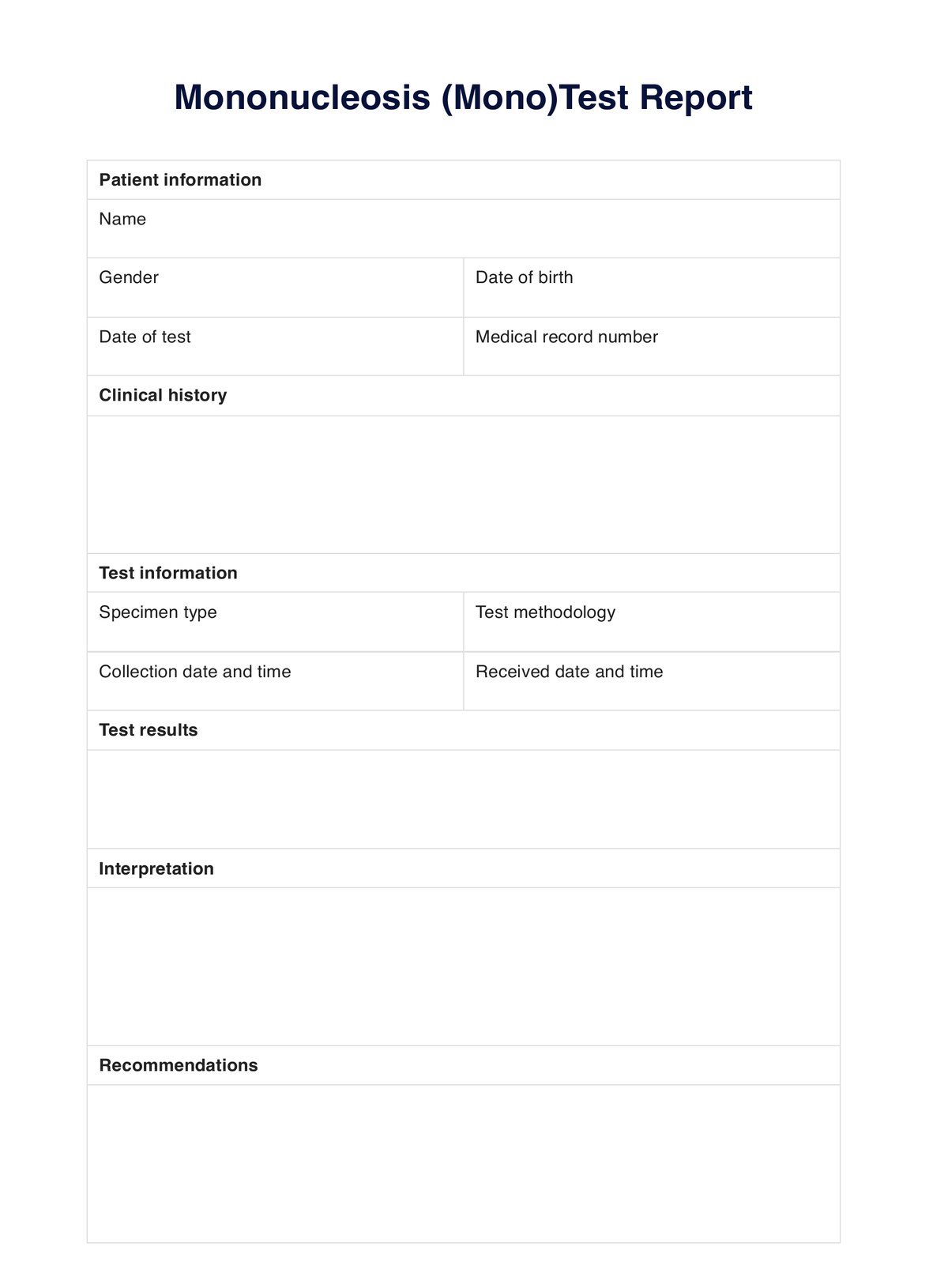Primary care physicians, infectious disease specialists, and healthcare providers may request a Mononucleosis Test for patients exhibiting symptoms consistent with mononucleosis, such as fatigue, sore throat, and swollen lymph nodes.

Mononucleosis Test Reports
Learn about the Mononucleosis Test, its purpose, and procedure, and get an example of the test results in this guide. Download a free PDF template here.
Use Template
Mononucleosis Test Reports Template
Commonly asked questions
Mononucleosis Tests are used when a patient displays symptoms of mononucleosis, such as extreme fatigue, sore throat, and fever. They are also ordered to confirm or rule out a mono diagnosis when warranted by clinical symptoms.
The test usually takes a short time, often just a few minutes, to draw the blood sample. However, the time required for results to be processed can vary, typically taking a day or longer to complete.
EHR and practice management software
Get started for free
*No credit card required
Free
$0/usd
Unlimited clients
Telehealth
1GB of storage
Client portal text
Automated billing and online payments











